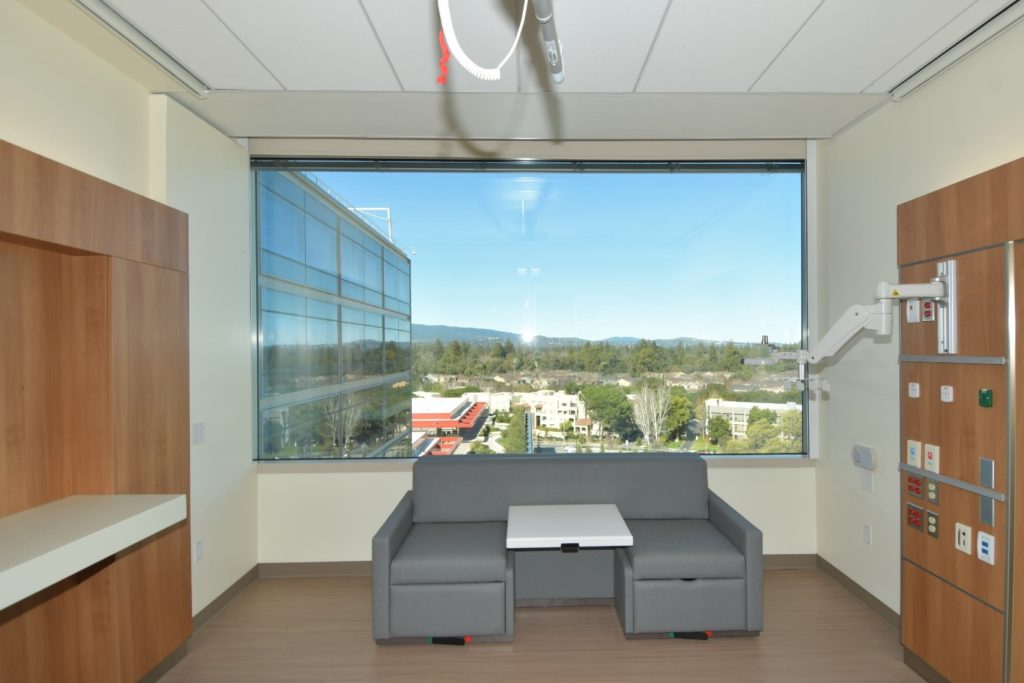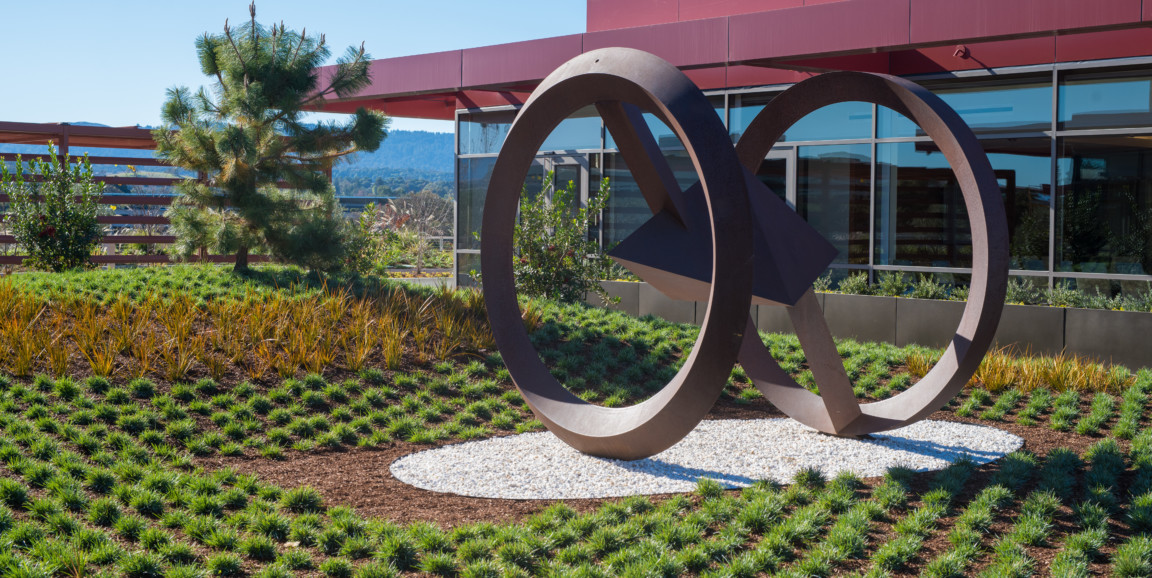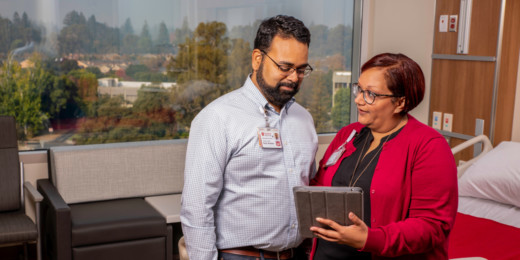From the patient rooms to the dog park to the paintings on the walls, designers of the new Stanford Hospital worked to create a soothing atmosphere for patients and families.
Incorporating feedback from patients and family members, hospital planners say the new facility set to open this year will imbue the patient experience with the healing powers of nature, light, art and quiet.
"We want the patients to have an experience that's as close to normal life as possible when they are sick and potentially in pain," said Ann Weinacker, MD, senior vice chair of medicine for clinical affairs and associate chief medical officer for patient care services at Stanford Health Care. Since 2009, she has served as one of the leaders designing strategies to improve the patient experience at Stanford.
Privacy, light and quiet
Patient rooms were placed on the periphery of the building, with the staff workspaces on the interior, to maximize patients' exposure to nature and natural light. Each room has an expansive window, which, besides facing a "quite lovely view," will help regulate patients' circadian rhythms, Weinacker said. Access to natural light has been found to reduce depression, ease pain, improve sleep, decrease the length of stay in hospitals, among other benefits.
Every room will be private and equipped with a 55-inch television screen, an iPad and a bedside remote that patients can use to select movies, on-demand TV, music, relaxation videos, white noise, spiritual content and patient education information. Patients will also be able to control the room temperature as well as the lighting and window blinds from the comfort of their bed.
Additional family space was designed into every patient room, with plug-ins for electronic devices, storage for personal belongings and a pullout couch, in recognition of the critical role families play in the patient's well-being, Weinacker said.
"We've really come to realize how important it is to let families spend as much time as possible with their sick family members," Weinacker said. "It's more support for the patient to have people who are there to comfort them, reorient them and talk about more normal things in their lives that physicians don't typically talk about."

Patients and families also asked the planners to prioritize the reduction of noise, whether it be from medical equipment or conversations taking place outside the room. Grace Hsu, director of design management for the new hospital, said the team incorporated soundproofing elements such as noise-absorbing finish materials for the nurses' stations, lower ceilings that prevent the reverberation of voices and even acoustic barriers around the toilets.
The healing power of nature
Access to nature is a key factor in reducing patient and staff stress and leads to better outcomes, the non-profit Center for Health Design found. The new hospital will have four acres of gardens, including five interconnected rooftop gardens on the third level of the building, with a walking path and multiple places to sit and take in the views of the nearby hills.
The gardens on the street level will include a dog park, complete with a water fountain and even a fire hydrant.
"Pets are such a contributor to our well-being and there hasn't been the luxury of space to allow families or staff to bring them. This is another opportunity for us to connect our users to things that remind them of wellness and well-being," Hsu said.
Family and caregiver support
The third floor offers family members and caregivers multiple dining spaces, a wide range of art and an interfaith chapel that looks out onto the roof gardens.
A caregiver and family resource center will be staffed by a medical librarian, health navigators and specialized volunteers, said Alpa Vyas, vice president for patient experience at Stanford Health Care.
"It is a place that is meant to be very welcoming and open to visitors, family members or caregivers to come and learn about not only the services that are offered in the hospital, but also learn about the patient's condition and what services and resources might they need to help the patient once they've been discharged from the hospital in their local community," said Vyas said. "It's really meant to enhance the experience they receive on the in-patient floor."
Art that inspires hope
When selecting the art that would appear throughout the new hospital, the volunteer art commission chose and commissioned pieces that would create a feeling of "hope or whimsy" to provide a positive distraction, Hsu said.
On the third floor, visitors will be able to watch a video installation by artist Jennifer Steinkamp of flowers and other elements found in the natural landscape around Stanford.
In front of the hospital entrance, visitors will see the Bucky Ball, an LED sculpture made up of concentric circles that light up and change color based on how it's programmed.

"The artist was very sensitive in terms of programming it towards the patients, and it changes in various settings to provide interest as well as a soothing, calming distraction," Hsu said.
Photos courtesy Stanford Health Care






